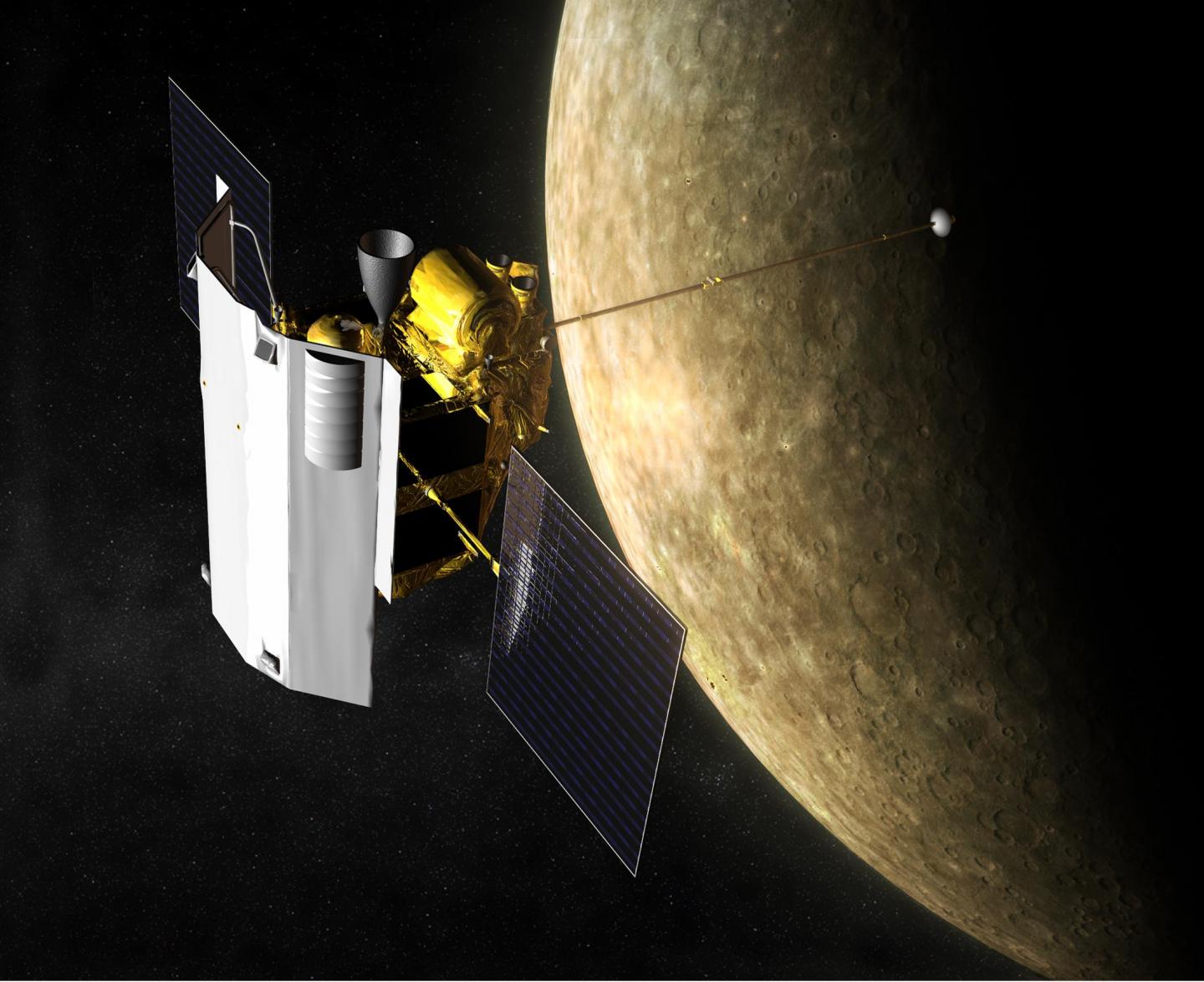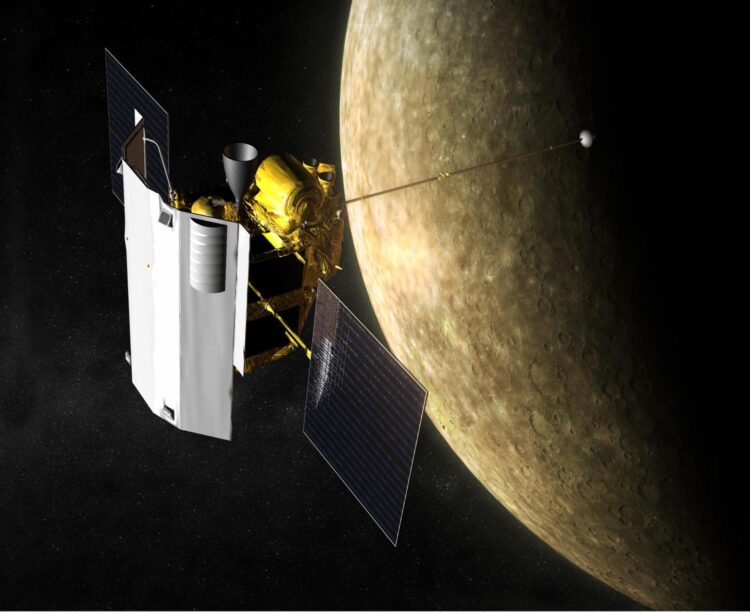
Credit: NASA/Johns Hopkins University Applied Physics Laboratory/Carnegie Institution of Washington
Scientists have found a way of measuring neutron lifetime from space for the first time – a discovery that could teach us more about the early universe.
Knowing the lifetime of neutrons is key to understanding the formation of elements after the Big Bang that formed the universe 13.8 billion years ago.
Scientists at Durham University, UK, and Johns Hopkins Applied Physics Laboratory, USA,
used data from NASA’s MErcury Surface, Space ENvironment, GEochemistry, and Ranging (MESSENGER) spacecraft to make their discovery.
As MESSENGER flew over Venus and Mercury it measured the rates at which neutron particles were leaking out from the two planets.
The number of neutrons detected depended on the time it took them to fly up to the spacecraft relative to the neutron lifetime, giving the scientists a way of calculating how long the subatomic particles could survive.
The findings, published in the journal Physical Review Research, could provide a route to end a decades-long stalemate that has seen researchers disagree – by a matter of seconds – over how long neutrons are capable of surviving.
Dr Vincent Eke, in the Institute for Computational Cosmology, at Durham University, said: “The lifetime of free neutrons provides a key test of the Standard Model of particle physics, and it also affects the relative abundances of hydrogen and helium formed in the early universe just minutes after the Big Bang, so it has wide-ranging implications.
“Space-based methods offer the possibility of breaking the impasse between the two competing Earth-based measurement techniques.”
Neutrons are normally found in the nucleus of an atom but quickly disintegrate into electrons and protons when outside the atom.
Scientists have previously used two lab-based methods – the so-called “bottle method” and “beam” technique – to try and determine the lifetime of neutrons.
The bottle method – which traps neutrons in a bottle and measures how long it takes for their radioactivity to decay – suggests they can survive on average for 14 minutes 39 seconds.
Using the alternative beam technique – which fires a beam of neutrons and counts the number of protons created by radioactive decay – gives about 14 minutes and 48 seconds, nine seconds longer than the bottle method.
While this might seem a small difference, scientists say the gap could be enormous. As the Standard Model of particle physics requires the neutron lifetime to be about 14 minutes 39 seconds, any deviation from this would provoke a fundamental change in our understanding of this model.
MESSENGER carried a neutron spectrometer to detect neutrons set loose into space by cosmic rays colliding with atoms on Mercury’s surface as part of research to determine the existence of water on the planet.
On its way the spacecraft first flew by Venus, where it collected neutron measurements for the first time ever.
Dr Jacob Kegerreis, in the Institute for Computational Cosmology, at Durham University, said: “Even though MESSENGER was designed for other purposes, we were still able to use the data to estimate the neutron lifetime. The spacecraft made observations over a large range of heights above the surfaces of Venus and Mercury, which allowed us to measure how the neutron flux changes with distance from the planets.”
Using models, the team estimated the number of neutrons MESSENGER should count at its altitude above Venus for neutron lifetimes would be between 10 and 17 minutes. For the shorter lifetimes, fewer neutrons survive long enough to reach MESSENGER’s neutron detector.
They found the neutron lifetime to be 13 minutes, with an uncertainty of about 130 seconds from statistical and other uncertainties, like whether the number of neutrons changes during the day and uncertainty about the chemical make-up of Mercury’s surface.
Their estimated neutron lifetime falls right near the range of the “bottle” and “beam” method estimates.
Lead author Dr Jack Wilson, of the Johns Hopkins Applied Physics Laboratory, said: “It’s like a large bottle experiment, but instead of using walls and magnetic fields, we use Venus’s gravity to confine neutrons for times comparable to their lifetime.”
As systematic errors in space-based measurements are unrelated to those in the bottle and beam methods, the researchers said their new method could provide a way to break the deadlock between the existing, competing measurements.
The researchers added that more precise measurements would require a dedicated space mission, possibly to Venus, as its thick atmosphere and large mass trap neutrons around the planet.
They hope to design and build an instrument that can make a high-precision measurement of the neutron lifetime using their new technique.
###
The research was funded by the US Department of Energy Office of Nuclear Physics, the Science and Technology Facilities Council (STFC), and the ICC PhD Scholarships Fund.
Media Contact
Leighton Kitson
[email protected]
Related Journal Article
http://dx.





